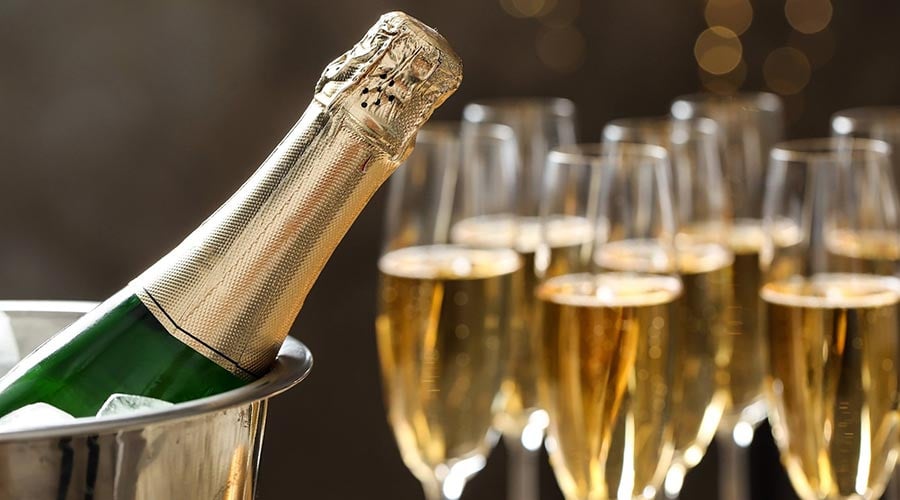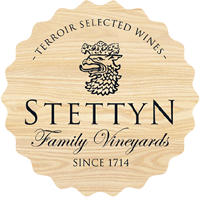What’s the difference between Champagne, MCC, and Sparkling Wine?
Whether you are celebrating a special occasion, or just treating yourself to a special bottle, a sip of crisp, cold bubbly is the ultimate way to elevate any special event. That said, it can be confusing to understand the types of bubbly and the difference between Sparkling Wine, Méthod Cap Classique (MCC) and Champagne.
So if you want to know exactly what you’re spending your money on when you’re picking out a bottle for celebration, then this handy guide is just the thing you need.
Here’s the difference between Champagne, Method Cap Classique (MCC) and Sparkling Wine.

What is Sparkling Wine?
Sparkling Wine is a term that refers to any sparkling, bubbly or carbonated wine. Essentially, any non-still wine that contains carbon dioxide bubbles would be classified as a Sparkling Wine.
Sparkling Wines have no specific rules about how to carbonate the wine and as a result tend to be an affordable way to get your bubbly fix. Champagne and MCC are actually types of Sparkling Wine, however there are extra rules around them that we’ll cover later.
Even though Sparkling Wines are not as revered as Méthod Cap Classique or Champagne, don’t let this fool you – Sparkling Wines can be every bit as tasty and even more creative!

How is Sparkling Wine made?
In order to produce a Sparkling Wine, any method of adding carbonation is acceptable. There are several different ways including:
1. Traditional Method (French Méthode champenoise)
As with any wine, grapes are harvested, pressed, and fermented in stainless steel tanks to produce a base wine. The base wine is placed into the familiar thick glass bottles, along with sugar, yeast and wine (liqueur de tirage) and sealed with a crown cap to undergo secondary fermentation.
During the secondary fermentation process, carbon dioxide (CO₂) cannot escape forming bubbles inside the bottle. Once secondary fermentation is complete, the wines are aged for a further 15-36 months on the lees (the dead yeast cells) to produce an enhanced flavour.
The next step is the riddling stage where the bottles are placed in special racks at a 45° angle and turned every day to encourage the dead yeast cells and other sediment to move down towards the neck of the bottle. Riddling prepares the bottles for disgorging where the neck of the bottle is dipped into a freezing brine solution (causing the sediment to freeze) and then the bottle is placed upright and the cap is removed. The sediment is expelled by the pressure within the bottle and the bottle is corked and covered with the well known wire cap, a muselet before labelling.

2.Tank Method
In the tank method a base wine is placed in a large tank and is dosed with a sugar and yeast mixture (Tirage). As the wine undergoes it’s second fermentation, the CO2 released from the fermentation causes the tank to pressurise, whereafter wines are filtered and bottled without ageing.

3.Carbonation
In this method, there is no secondary fermentation step at all. The base wine is placed in a large steel tank and is carbonated in a pressurised tank similar to the way that carbonated soft drinks are produced. The carbonated wine is then bottled and sealed with a cork and wire cap.

What is Champagne?
Now that we know what makes a Sparkling Wine let’s delve into what Champagne is and how it is different.
Although Sparkling Wine is produced all over the world, if you want to call your bubbly a ‘Champagne’ then legally, it must come from the Champagne region of France and must be made in accordance with Comité Interprofessionnel du vin de Champagne regulations. These requirements are quite strict and have rules covering every aspect of champagne production from how the grapes are produced and farmed to the processing and production of the final wine.

How is Champagne made?
Champagne is strictly produced using the traditional French Méthod champenoise of primary and secondary fermentation followed by ageing on the lees and then riddling and disgorging before bottling the final product which we described above.
What grapes are used to make Champagne?
Since the Champagne region is a relatively small area, Champagne wines are typically produced from three predominant grape varieties: Pinot Noir, Meunier, and Chardonnay
What is MCC?
In a nutshell, Méthode Cap Classique or MCC for short, is the South African version of Champagne – they are South African Sparkling Wines made by the traditional Champagne method
The term has been used since 1992 in response to the ban on the use of the words ‘Champagne’ and ‘Champenoise’ for anything other than the bottle-fermented wine from the Champagne region in France.
MCC is considered a premium category in South Africa and the term ‘Méthode Cap Classique’ will always be written on the label to represent their classification. Despite not being able to bear the Champagne name, South African wineries make some pretty stellar MCC!

How is MCC made?
MCC is produced using the same process as for Champagne by creating a second fermentation in the bottle which traps carbon dioxide resulting in the familiar effervescent wine we all love.
When did MCC originate?
The first Méthode Cap Classique produced in South Africa was released in 1971, around 50 years ago, and since then it has become one of the fastest-growing wine categories in the country.
What is the difference between MCC and Champagne?
MCC and Champagne are made using the same traditional French method, known as methode champenoise. The only difference between the South African MCC and Champagne is where the grapes are grown. This actually gives South African MCC much more flexibility in the grape varietals used and gives the winemaker more flexibility to make a truly stellar bubbly.
What is the difference between MCC and Sparkling Wine?
MCC is a type of Sparkling Wine specifically produced using the traditional method for introducing carbon dioxide into the via secondary fermentation and ageing which is not required for Sparkling Wine
You can spot the difference between the two if you look closely at their bubbles; an MCC will have tiny bubbles with refined effervescence while Sparkling Wine has a larger, coarser fizz.
You may also notice a difference in taste as the secondary fermentation and ageing of MCC creates more creamy, yeasty and nutty notes such as brioche.
What can I pair with Sparkling wine, MCC or Champagne?
South African MCC is known to be one of the most versatile wines as it can be enjoyed with breakfast, lunch and dinner. It is known to pair well with dishes such as oysters, canapés, cheeses, chicken and fish, and sweeter MCCs can be paired with light curries and desserts. We’ve put together a guide to pairing wine and cheese if you want to learn more about what cheese to pair with Sparkling Wines.

What is the price of MCC, Champagne and Sparkling Wine?
Often the biggest consideration when choosing to buy an MCC, Champagne or Sparkling wine is cost.
The great news is, that while our Sparkling Wines and MCCs are every bit as impressive, premium, and delicious as our French cousin’s varietals, we can get them at a fraction of the cost of French Champagne!
For those special occasions, Champagne is the most expensive of the three and will cost upwards of R500 a bottle. MCC provides great value for money and you can usually pick up a bottle for around R200 a bottle.
For an affordable bubbly fix, a nice bottle of Sparkling Wine will only set you back around R100.
Try South African MCC and Sparkling Wine for yourself
Now that you know the difference between the different types of bubbly wine available, go out and try some for yourself!


